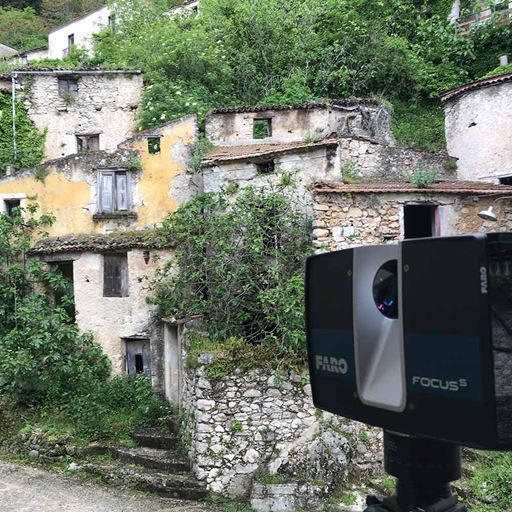Film gives voice to a community torn apart by earthquake
-
Date
Mon 23 Nov 20

Forty years after an earthquake destroyed Senerchia in southern Italy, the town’s inhabitants have spoken about their old neighbourhoods in a new documentary which sheds vital light on rebuilding resilient communities after disaster.
At the heart of Italia Terremotata, produced by Dr Paola Di Giuseppantonio Di Franco, from the School of Philosophy and Art History, and Dr Fabrizio Galeazzi, from StoryLab at Anglia Ruskin University, is a 3D reconstruction of the ruins that still haunt the community.
The film features interviews with those who experienced the earthquake and were left homeless. Many of them talking about their experiences for the first time.
It reveals how closely heritage and culture are tied to a place and that new reflective, creative and collaborative approaches to reconstruction are vital to the survival and resilience of community.
At 7.34pm local time on 23 November 1980 the Irpinia earthquake, with a magnitude of 6.9 and 90 aftershocks, left almost 2,500 people dead and 250,000 homeless across southern Italy.
“This was one of the most devastating earthquakes in Italian history,” said Dr Di Giuseppantonio Di Franco. "Many people lived in prefabricated houses for more than 20 years before they were able to return to the new rebuilt town, but when they did return they found they had lost their ‘sense of place".
Using a 3D laser scanner and 360 degree panoramas, Dr Di Giuseppantonio Di Franco was able to create a digital replica of the old town in Senerchia with accurate interpretations of the surfaces and colours of the environment.
Embedded in the film are interviews with the town’s people, telling stories of daily life and revealing the impact the earthquake had on their community, its identity, social cohesion, and sense of belonging.
![Paola Di Giuseppantonio Di Franco wearing a black top and red-rimmed glasses, smiling]() "It is clear that communities must be at the heart of rebuilding during the time of displacement...The time of displacement must be turned into a productive space."
"It is clear that communities must be at the heart of rebuilding during the time of displacement...The time of displacement must be turned into a productive space."
Although 20 years of rebuilding created job opportunities in Senerchia the reconstruction failed to create long-term economic development and many inhabitants have moved away.
The new town was rebuilt based on post-modern schemes common in urban but not rural contexts. It is three times larger than the original, leaving inhabitants scattered and feeling disconnected.
One interviewee explains the impact: “Before the earthquake there was this sense of community, street and home. The neighbourhood, the chair outside the house, the chatter with the neighbour. The post-earthquake reconstruction has ruined all this, because the towns have been dismembered.”
Dr Di Giuseppantonio Di Franco said: “It is clear that communities must be at the heart of rebuilding during the time of displacement.
“They must be invited to reflect on their identity as a community, on their roots, their heritage and the state of the community and the built and natural environment at the exact time of rupture. This time of displacement must be turned into a productive space.”
She argues that communities must be actively involved in removing rubble and selecting what to preserve, opportunities that allow them to heal, reflecting on the identity of the community, planning the reconstruction, and working on the rebuilding at a pace that suits them.
“In more recent earthquakes this has been happening, thanks to NGOs, such as Action Aid,” she said. “Natural disasters have become more frequent in Italy in the last 20 years and the grassroots projects that are happening now in the communities are good examples of how the time of displacement can be conceived as a productive space.
“Working with the people of Senerchia in making this documentary has shown that we can learn from the past to build a better future,” added Dr Di Giuseppantonio Di Franco.
Dr Fabrizio Galeazzi, Research Fellow at the StoryLab Research Institute, said: “Alongside a traditional, linear film, our virtual reality interactive documentary includes the old and new Senerchia reproduced in 3D, as well as video interviews with members of the community, 360 panoramas, soundscapes, songs, poems, and archival material such as photos and newspaper reports.
“We are interested to gauge how this new technology and non-linear storytelling can help communities like Senerchia reconnect to the lost physical places – their tangible heritage – as well as help them recollect the non-physical, intangible aspects of their heritage such as cultural identity, memories, and traditions.”
It is the result of a collaborative project funded by Anglia Ruskin University and Eastern Arc.
)
.jpg?mh=500&mw=500&hash=6568B6C9CCF5290A596BEF6678B6AD0E)



